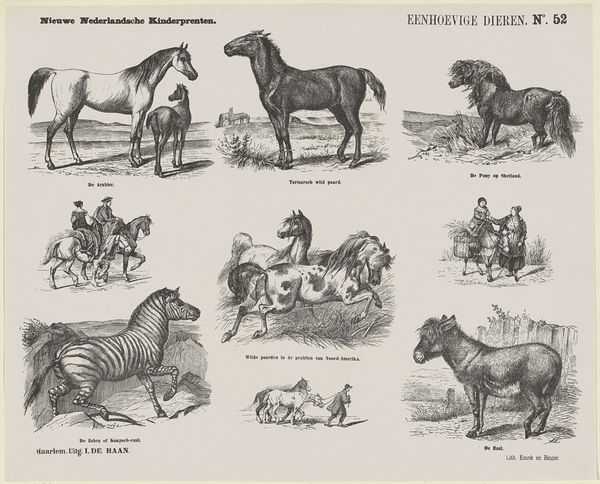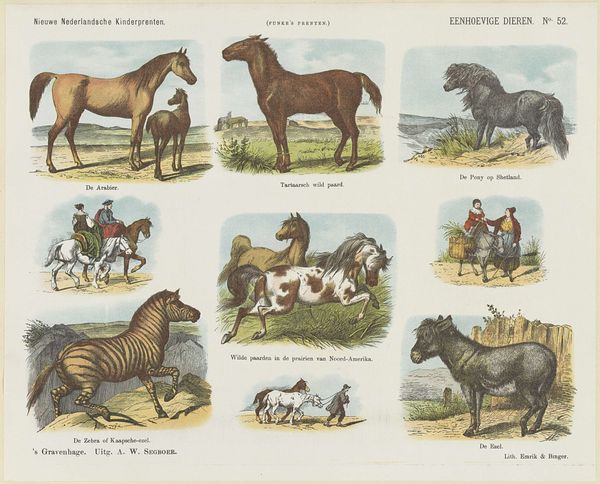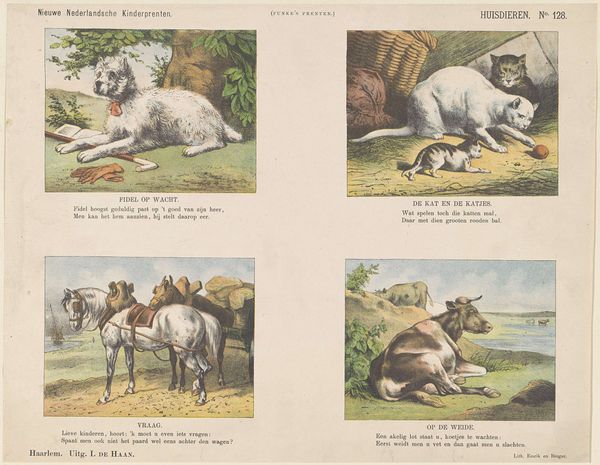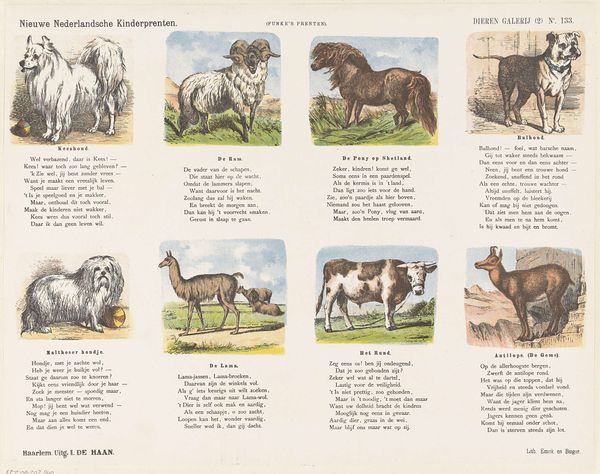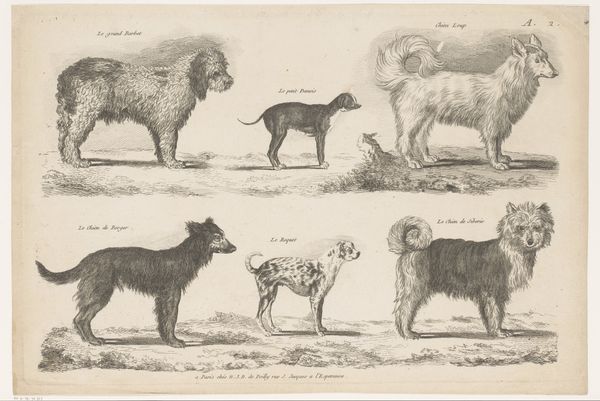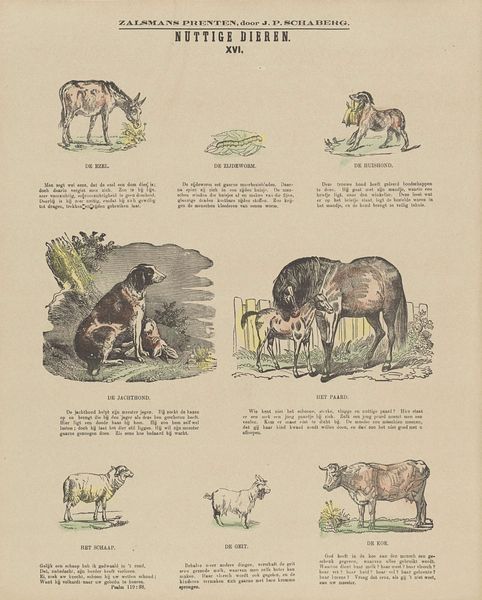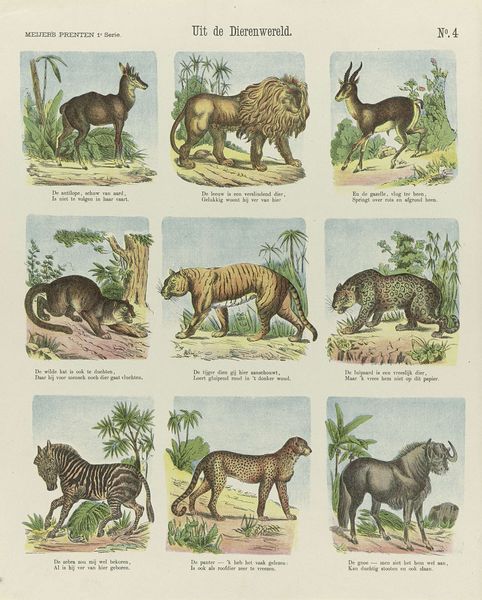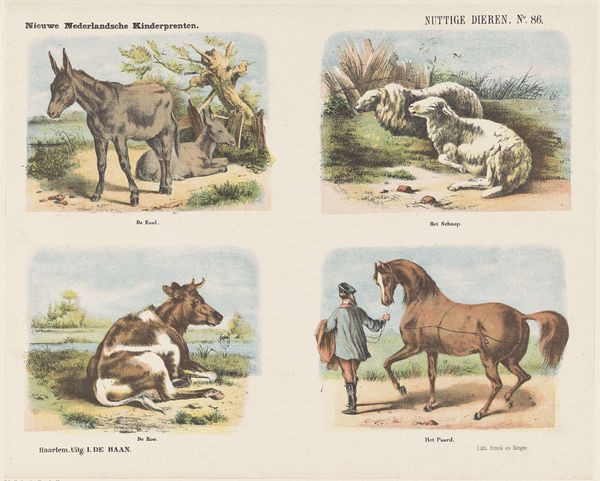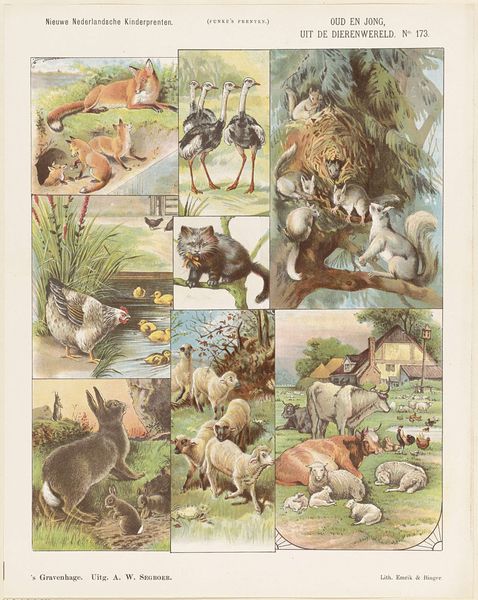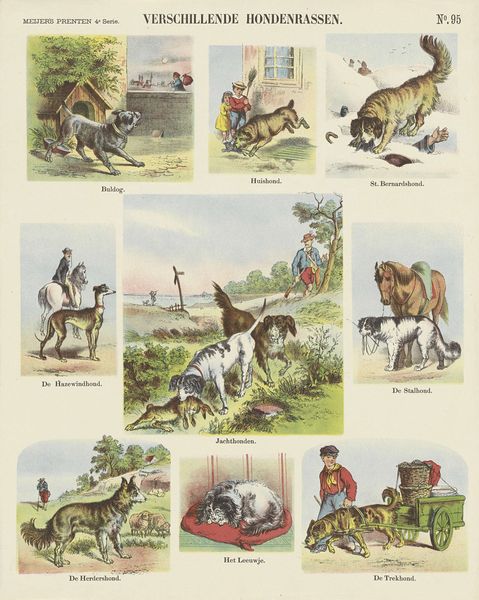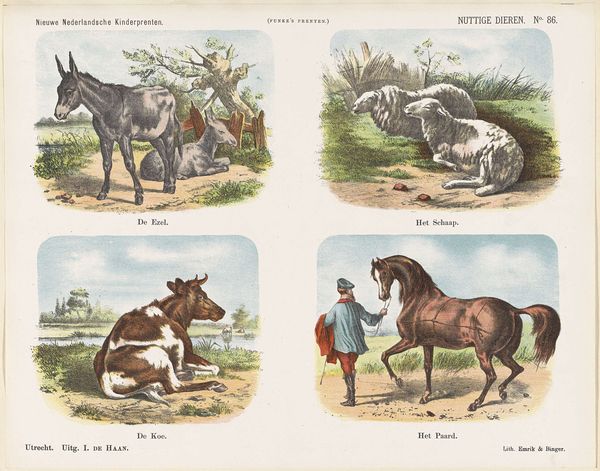
graphic-art, lithograph, print, engraving
#
graphic-art
#
animal
#
lithograph
# print
#
dog
#
genre-painting
#
engraving
#
realism
Dimensions: height 344 mm, width 430 mm
Copyright: Rijks Museum: Open Domain
Curator: This delightful lithograph, dating from between 1865 and 1875, is entitled "Verscheurende dieren (honden)" or "Tearing Animals (Dogs)" by George Lodewijk Funke. What's your initial response to it? Editor: It's rather charming! A visual catalogue of canines, almost like a vintage breeder's chart. I'm immediately drawn to the variety; it hints at selective breeding practices and evolving relationships between humans and animals during that period. Curator: Indeed, the composition is meticulously organized. Each breed is clearly delineated, emphasizing its unique physical characteristics. Consider the artist's skillful use of line and texture to differentiate between, say, the smooth coat of the Greyhound and the fluffy fur of the Maltese. The attention to detail here is masterful. Editor: Agreed. And notice the label "Nieuwe Nederlandsche Kinderprenten" at the top? It suggests this print was designed for children, framing it within the context of education and socialization. What message were children meant to take away from this showcase of breeds, do you think? Curator: It might reflect an early understanding of taxonomy or even subtle indicators of class distinctions being subtly promoted, with each breed associated with certain activities or social standing. The arrangement is logical; the stylistic realism highlights distinctions with purpose. Editor: I wonder about the potential link between this image and emerging ideas of social Darwinism around this time. Were certain breeds, and by extension, certain societal groups, being subtly positioned as superior? The title itself "Tearing Animals (Dogs)" gives me pause – there is a brutal truthfulness underlying the categorization. Curator: Fascinating point! Semiotics are useful here: on the surface, it's an educational print but on deeper examination it is possibly coded with those hierarchies. Note too, how the lack of background, besides suggestions of outdoor spaces, serves to further isolate each dog within its ideal, or idealized, function. Editor: Seeing it within its social, historical context makes me wonder what those silent depictions suggest beyond their pure aesthetic values. Each breed embodying expectations about the wild, domestic spaces, loyalty, and power relations – even for children’s minds. Curator: The beauty of such work lies in its intricate interplay between form and the sociohistorical forces that shape perception. The lithograph technique with the range of shading is compelling! Editor: Precisely; dissecting seemingly benign pieces often reveals the layers beneath; let’s remember context is always key.
Comments
No comments
Be the first to comment and join the conversation on the ultimate creative platform.
